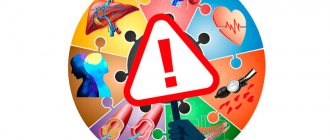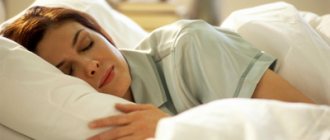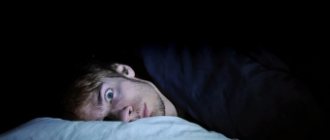On average, every person experiences panic attacks once or twice in their life. This may be associated with severe emotional shock or be the onset of panic disorder [1].
First, let's look at what panic attacks are and how to treat them at home yourself. After all, most often they take us by surprise, leaving no time to adequately assess the situation.
What is a panic attack?
Panic attacks are sudden attacks of severe anxiety. They can occur for no reason or under the influence of severe stress. Accompanied by a strong heartbeat, a feeling of lack of air and a state of eclipse of reason.
Agoraphobia is often associated with panic attacks. It is a sudden attack of uncontrollable fear and anxiety that occurs due to situations that the person is unable to control.
Examples of such situations:
- Being in large crowds (for example, riding public transport)
- Public performance
- Staying in close quarters (plane, elevator, car)
- Fear of open spaces (parks, stadiums)
As you can understand, the causes of agoraphobia are absolutely common and typical. Therefore, its appearance can greatly affect the normal course of life.
An ordinary visit or to work, driving a car or other seemingly ordinary activities can provoke agoraphobia.
This makes a person helpless and reduces social activity. Instead of the joy of meeting relatives and holidays at work, a person feels the fear of an attack.
Signs and symptoms of panic attacks
Common symptoms that accompany attacks include:
- Strong rapid heartbeat
- Feeling of suffocation
- Severe chills or fever, excessive sweating
- Nausea, diarrhea
- Dizziness and feeling of loss of consciousness
- Fear of death
People who suffer from panic attacks are regular visitors to hospitals and family therapists. After all, all of the above symptoms are also typical for diseases of the cardiovascular system, respiratory system or thyroid gland.
Remember: the average duration of a panic attack is 10 minutes, after which all symptoms subside. This is her distinctive feature.
Causes of panic attacks
We all go through certain stages in life. Joyful and sad - any life events are stress for the body, which can provoke attacks [2].
The causes of panic attacks can be an exam or an important interview, a job change, the birth of a child or a wedding. But most often the pretext is stress after negative events: dismissal from work, expulsion from university, divorce, accident or death of a loved one. Panic attacks appear from severe shock and do not depend on age [3].
Risk factors
Since we are all susceptible to stress and are not immune to panic attacks, it is worth noting additional risk factors.
These include:
- Heredity – the presence of panic attacks in close relatives [4]
- Features of temperament: lack of resistance to stress and strong fluctuations in emotional background [5]
- Presence of mental disorders (for example, depression) [6]
- Women suffer from panic attacks 2 times more often than men [7]
- Use of drugs, alcohol or medication
- Past or present exposure to physical or sexual violence
Panic attacks most often occur unexpectedly. They can find us at home or at work, in the gym or store. Don't get hung up and wait for a panic attack. But you need to know the ways in which you can calm yourself down.
Is it possible to cope with a panic attack with medication?
Many of those who have experienced the symptoms of a panic attack in their lives believe that they can resist the attack with the help of medications. This understandable desire to take care of one’s own well-being has another side - the very absence of a medicine at hand can provoke panic for some. But it is often not possible to effectively stop a panic attack with the help of medications, since they take time to take effect. Usually the effect of the drug is noticeable half an hour after administration, but during this time a panic attack can end as suddenly as it began. However, in the case of prolonged and intense attacks, medication cannot be avoided.
Sedatives made from herbal ingredients are sold in pharmacies without a prescription. These are tinctures and tablets based on valerian, motherwort, passionflower and other plants. The drugs relieve irritability and anxiety. Compared to tablets, alcohol solutions act faster. Benzodiazepines are more effective, especially fast-acting drugs from this series. They are taken orally or administered intravenously. To stop a panic attack with these drugs, after administration you need to wait from a quarter of an hour to half an hour.
Important! Medicines should not be taken without a doctor's prescription. The doctor will not only select the most suitable medications, taking into account all the symptoms, but will also prescribe the required dosage.
For drug therapy between attacks, especially in order to reduce anxiety in anticipation of PA, the following groups of medications are used:
- Tricyclic antidepressants. They are characterized by a full-fledged anti-panic effect, but this effect is delayed by 2-3 weeks from the start of administration. The lack of quick results often disappoints patients, and they stop taking the drug.
- Selective serotonin reuptake inhibitors. Their effect on panic is not accompanied by a sedative effect. They have a minimum of side effects and are convenient to take once a day.
- High potency benzodiazepines. Their main advantage is the ability to quickly stop a panic attack, as well as quickly achieve an effect in reducing anxiety and controlling its occurrence.
Exercises for VSD
Neurocirculatory or vegetative-vascular dystonia is a fairly common disease that occurs as a result of a disruption in the functioning of the autonomic system of the human body. It maintains balance and regulates the functioning of internal organs, lymphatic and blood vessels, and glands.
When this system malfunctions in combination with frequent stress and nervous shock, dystonia occurs.
It is recommended to treat VSD not only with medications. Proper nutrition, giving up bad habits, and performing physical procedures will also be effective.
Physical exercises for VSD, performed on the recommendation of a doctor, have a positive effect on the general condition of the body. The positive effect (improvement) will be noticeable after a month of regular exercise.
To establish an accurate diagnosis, you must seek help from a doctor.
For neurocirculatory dystonia, exercises are prescribed after the doctor has made an accurate diagnosis and determined the type of disease (based on hypotonic or hypertonic characteristics).
Any exercise should begin with a warm-up with a gradual increase in load, and end with stretching. For effective treatment it is necessary to alternate exercises.
Running for short distances during VSD will be effective if you maintain proper breathing.
Swimming during VSD relaxes muscles, has a positive effect on the entire body, allows you to relieve fatigue, reduce or completely get rid of excessive stress on the joints.
Walking with VSD should be fast. You should breathe correctly. A unique method for treating dystonia according to Bubnovsky consists of training on simulators, which helps relieve tension in some muscle groups and increase the tone of others.
Gym
If performing simple physical exercises at home is not enough for a patient diagnosed with VSD, you can visit the gym with the doctor’s permission.
To do this, the trainer needs to select a set of exercises, taking into account the individual characteristics of the disease for effective treatment.
Patients who have a severe form of VSD cannot go to the gym or engage in professional sports.
In the gym, patients need to do exercises that normalize the body’s autonomic system and improve their general condition. Mixed types of training are prohibited. It is necessary to exclude activities related to weightlifting, avoid sudden changes in body position, and do not do exercises in which the head is below the level of the pelvis. Perform all exercises without holding your breath.
After finishing your workout, it is recommended to take time for water procedures in the pool and take a contrast shower to relax the muscular and autonomic systems.
Exercises for VSD at home
Morning exercises at home with VSD will help normalize the functioning of the cardiovascular and autonomic systems, improve mood, and increase muscle tone. Along with drug treatment, doctors strongly recommend performing simple exercises at home, while maintaining proper breathing. These include:
- Lunges with feet forward.
- Turns, tilts the body in different directions.
- Raise your legs to the waist, alternating them.
- Moving your head in a circle.
- Stretching while sitting.
- Performing breathing exercises.
It is recommended to do exercises daily. Over time, you can conduct classes outside.
Breathing with dystonia
Insufficient oxygen flow to the vessels is one of the causes of VSD. When performing physical exercises at home or in a fitness center, you need to learn proper breathing.
With moderate physical activity, blood flow to the vessels increases, and the ability to breathe correctly allows you to saturate the blood with oxygen.
When performing exercises, you need to inhale through your nose and exhale through your mouth. The pace of exercise should be the same as the breathing rhythm. Correct use of the muscles of the chest, abdomen, and diaphragm will teach the patient how to breathe correctly. This will help saturate the body with oxygen and help get rid of frequent dizziness and general weakness.
What is prohibited in VSD?
If a doctor has diagnosed VSD, the patient is recommended to engage in physical exercises that reduce the symptoms of VSD and regulate the functioning of internal organs. It is contraindicated to carry out exercises with dumbbells, barbells or endurance exercises, weightlifting, and martial arts.
An incorrect set of exercises leads to negative consequences, such as:
- deterioration of the patient's general condition;
- frequent headaches;
- pain in the heart;
- difficulty breathing, lack of oxygen;
- increased irritability, sudden mood swings;
- worsening sleep;
- depression.
Excessive physical activity leads to stress in the body and negatively affects the patient’s condition. To prevent this, you should consult your doctor before starting classes.
How to cope with an attack yourself
When you feel an attack approaching or starting, you first need to calm down. It is important to ensure a flow of fresh air - open a window or go out into the air yourself. It's good to drink a glass of water or a soothing herbal remedy. It is advisable to always have water with you, even when outside the home. It will help cope with dry mouth, which almost always accompanies attacks. In addition, by taking slow sips, you can focus maximum of your attention on them to distract him from panicky thoughts.
While at home, you need to try to relax your muscles and be in a comfortable position. If you find yourself on the street at such a moment, if possible, move away from a busy road or crowded place. It would be ideal to go to a park or square. There is also a whole list of techniques and exercises that are indispensable if you need to quickly stop a panic attack.
Breath control
A panic attack is almost always accompanied by breathing problems. It can be superficial, attacks are accompanied by shortness of breath and suffocation. Therefore, first of all, you need to concentrate on restoring normal breathing.
You can use the technique of slowing your breathing. It is necessary to reduce the number of inhalations and exhalations - no more than ten per minute, maintain diaphragmatic breathing. Its correctness can be controlled by holding your hand on the body in the stomach area. When breathing, it is this zone that should rise and fall. Inhale a little, hold the air inside for 10 counts, exhale slowly for 3 counts and hold for the same number of counts. Then repeat the cycle. You need to fully concentrate on the breathing process and repeat the cycles until the fear goes away. The good thing about this method is that it can be used anywhere and unnoticed by others.
A temporary increase in carbon dioxide in the blood helps to stop a panic attack. To do this, use a paper bag, which you press very tightly to your lips and begin to breathe into it. Oxygen stops entering the lungs, and the concentration of carbon dioxide increases. The disadvantage of this method is that using it on people requires overcoming embarrassment. If you don’t have the package with you, you can replace it with a tightly folded hemisphere (fingers closed) and palms pressed to your face. Breathing in this case is carried out in them.
Important! If you focus on symptoms, fear and panic during an attack, they will only worsen. You not only need to force yourself not to worry with all your might, but also to divert your own attention away from the symptoms.
Abstraction
Ways to divert your attention from the manifestations of a panic attack, at first glance, are very simple, but they are effective. For example, you can start counting the objects around you: trees in the park, children on the playground, cars on the road, people passing by.
A useful technique is to use your imagination. For example, mentally being in a place where you usually feel comfort and peace. You can remember such places and situations from your own life. For example, a quiet walk in the forest or relaxing on the seashore. If your own experience fails, calming scenes from memorable films will help. A good way is to choose an item and describe it in every detail: shape, color, taste, smell, purpose, functionality, and so on. The more detailed and detailed the description, the more effective the distraction from the main problem.
You can start thinking. For example, calmly, in detail (and preferably with a positive attitude) make plans for tomorrow or for the weekend, for the next vacation. Or you can start thinking about the panic attack itself, but as if it were happening to another person. That is, from being an involved person to becoming an observer and researcher. Putting aside emotions, with pedantry and objectivity, record and evaluate all the current manifestations of the attack, their severity. Not everyone can achieve this distraction, but by doing auto-training between attacks, you can develop such abilities. Anyone who wants to get rid of a panic attack can make an appointment with psychologist Nikita Valerievich Baturin.
Another way to distract attention, and sometimes even stop an impending attack, is to carry with you a small elastic band in the form of a ring, slightly larger in diameter than your wrist. At a critical moment, you need to put it on your wrist, pull it as far as possible and release it. You should get a very noticeable click. The sharp pain will serve as a good distraction.
Activity and movement
If you feel an attack approaching, it is better not to freeze in panic, but to force yourself to move. You can simply speed up your pace and walk a decent distance. If you can go for a run, you can do it for a few minutes. While indoors, running can be replaced by push-ups or a series of squats. You can simply dance to your favorite music.
By the way, music helps many people switch. It’s good to download your favorite melodies to your phone so that you can listen to them at a critical moment. Music, especially your favorite one, will take your thoughts away from panic and help you calm down. Another useful way is to switch to some activity. For example, make a phone call to someone with whom you have something to discuss or just a pleasure to talk to. In this case, it is better not to touch upon the topic of symptoms. A poetry lover can recite a poem. You can watch a movie. It would be preferable if it was a comedy.
Important! When trying the described methods and exercises, you need to carefully evaluate how well each of the proposed ones helps solve the main problem - stopping a panic attack, choose from them those that act faster and help, and create a personal set of techniques.
Relaxation techniques
We looked at breathing techniques as the main way to relax and gain inner peace.
But if for some reason this method did not suit you or you want to learn more about relaxation techniques, let’s consider a few more of them.
Meditation
The most common way of relaxation, after breathing. The easiest way is to download a meditation program on your phone.
If you think you don’t have enough time for this, we can offer several more options.
- Household chores. While washing dishes or ironing clothes, you can meditate. Count the number of your breaths, for example. This will relax your mind and calm your nerves.
- Meditation by sound. According to tradition, monks resorted to meditation when they heard the sound of a bell. Take two deep breaths when you hear a car horn, for example. Or when someone else's phone rings.
- Meditative walking. When you go to work or back home, to the store, gym or pharmacy, practice walking meditation. Slow down and inhale for each step with your left foot, for example.
- Active meditation. If you play sports, you should try combining exercise with meditation. Focus on tensing and relaxing each muscle. Feel how they push the dumbbells and stretch as you stretch.
- Practice two breaths. Take two deep breaths in and out before performing routine activities. What do we do every day? We call on the phone, respond on social networks and turn on the computer. Develop this habit of taking two breaths before one of your daily tasks.
These short daily practices will help you reduce your anxiety and stress levels.
Practicing Presence
Learn to see and notice everything that happens to us in life. Take a few minutes a day and focus on your feelings.
Feel the wind blowing through your hair. How the food you eat dissolves in your mouth and passes down your esophagus. How the clothes feel on your body and how your shoes fit.
This way you are distracted from constant problems and focus on the present moment. This will help you feel less stressed.
Remove the blocks
Any emotions are reflected on our face and body. But sometimes they take possession of us so often that we cease to feel this constant tension. It becomes familiar to us. These blocks need to be removed.
Take a comfortable body position. Close your eyes and start thinking about each part of your body in turn. Feel these spasms. Relax them. For example, when thinking about the forehead, we feel tension in the horizontal muscles of the forehead and between the eyebrows. Relaxed. The eyes felt a constant squinting. Relaxed. And so on for all parts of the body.
This technique will help you relax your body and relieve stress.
Listen to music
Calm music can calm anxiety and restlessness. In addition, it reduces high blood pressure and heart rate. Also, loudly humming your favorite music and loud laughter can lower the level of cortisol, the stress hormone. And it also increases the level of endorphins, improving our mood.
And finally...
Almost every person experiences panic attacks in their life. Most often they happen under the influence of severe stress: dismissal from a favorite job, divorce from a spouse, or death of a loved one.
In this article, we looked at what panic attacks are, self-treatment at home, as well as the reasons for their occurrence.
Breathing practices, working with your consciousness and meditation are the main key to relieving stress and anxiety. They are available to everyone and will help you control your panic at home.
What to do between attacks
Between panic attacks, the main task is to focus on actions that will help avoid recurrence of attacks. Often, treatment of panic attacks cannot be done without psychotherapeutic help. The psychotherapist explains how anxiety appears and the mechanism of panic. Helps the patient find the reason that underlies his fears. Offers techniques that help cope with the mechanism of anxiety. Teaches you how to manage emotions and how to respond correctly to stress.
A difficult but effective way to overcome panic attacks is to independently work on emotions, character, and consolidate the knowledge and techniques acquired in classes with a psychotherapist. The use of relaxation methods and meditation helps relieve increased anxiety. A person can learn this on his own. A useful resource is the channel of psychologist and hypnologist Nikita Valerievich Baturin.
Accept your thoughts
This technique is based on the principle of being attentive to your feelings. Most often, we try not to react to negative thoughts in our heads. At the same time, we think that over time they will disappear on their own.
But that's not true. They return again and again, provoking anxiety and panic attacks.
Let it happen. Allow all your thoughts, especially negative ones, to sound in your head. Be attentive to each and be aware of them. This will allow you to become indifferent to them over time. And you will be able to control your reaction to them.
This will bring peace to your thoughts and relieve panic attacks.
So let's get started. Take a comfortable body position. Do your favorite breathing practice. Relax. Let your inner voice speak. Be impartial and open-minded. When the stream of thoughts ends, repeat the breathing practice.
Mindfulness meditation is equally good to do at any time of the day. In the morning, with its help you will get rid of morning anxiety. In the evening, after practicing mindfulness, you will have a healthy, sound sleep.
It is worth remembering that this practice can cause increased anxiety at first. But over time, it will help you gain inner peace and relieve attacks of panic and anxiety [10].











